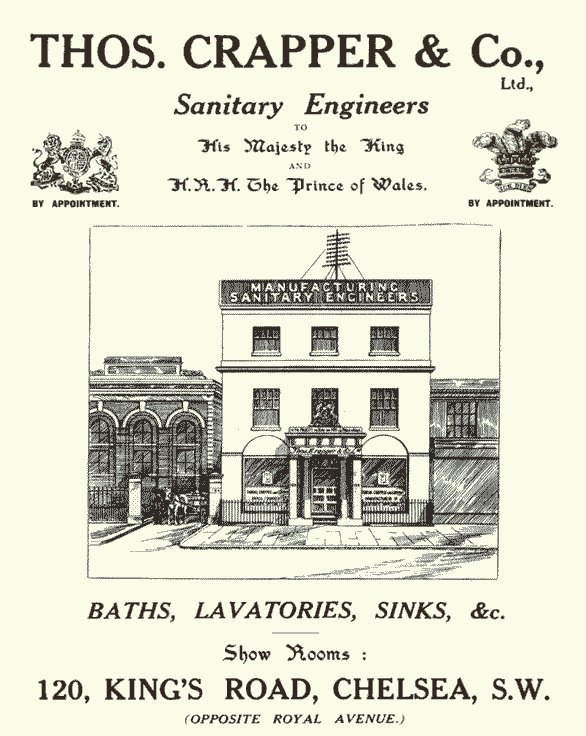Did Thomas Crapper’s Products Have a Design Flaw?
Posted on September 15, 2016
It’s amazing what you can find on the internet these days, it really is an educational tool that would is way beyond the realms of what we could have dreamed of 20 years ago.
For instance, this week I got caught up in the world of defecation after watching a video posted on Facebook that appears to suggest that we have been releasing our ‘daily digestive transits’ in the wrong fashion for the past 150 years or so.
As if often the case, as I explored the the different aspects of our daily ritual, I drifted onto related subjects and found myself studying the life and times of Thomas Crapper, a plumber who patented several sanitary items, but not, I discovered, the flushing toilet.
The flushing toilet was invented by John Harington in 1596. Joseph Bramah of Yorkshire patented the first practical water closet in England in 1778 whilst George Jennings in 1852, also took out a patent for the flush-out toilet.
However, Crapper was great at marketing and opened the first ever sanitary showroom in the 1800’s, even fitting flush lavatories at Sandringham with the Royal approval of George V. Crapper never looked back and the flushing toilet took off from there.
Was Crapper’s design flawed? Well according to ‘Health Hacks’ we have been using the Sir Thomas all this time and it really does mess with our intestines and lower bowels, basically because we are squeezing the area where digestive transits are released.
Watch below.
I have given this method a trial out (the things I do for my readers) over the last few days and I don’t know whether it is psychological or not but, without going into unnecessary detail, I appear to be exiting the WC transparent and slightly exhausted, offering shuddering reminders of an ordeal I experienced with an enema at Basingstoke hospital a few years ago.
What I am saying is that it appears to work.
If this is the case, the standard toilet has an understated design flaw that dates back to the 1800’s and may be the cause of an increase in IBS and various bowel diseases (although donuts, McDonalds and KFC buckets don’t help).
What is certain is that by changing your position, you will almost certainly do more good than harm (I’m using a laundry basket as my step) and you will potentially feel more internally cleansed in the future.
Go on give it a go.
Back to the subject of sir Thomas Crapper. I always thought that was where the word crap came from but it appears that his name was just beautiful coincidence, although it is thought that the American term ‘going to the crapper’ did derive from American servicemen seeing the name stamped on cisterns.
Thomas Crapper died in 1910 but the company continued under his old partner Robert M. Wharam, his son Robert G. Wharam and Mr. Crapper’s nephew George Crapper. However by the late 1950s, after the demise of the original partners, it was evident to Robert G. Wharam that with no Crappers or Wharams left to run the business, the sale of the company was a formality.
It was also apparent that the post war period was devoid of any desire for quality and In 1963 Thomas Crapper & Co. was bought by local rivals, Messrs. John Bolding & Sons, Ltd.
Despite several desperate years it survived and in a heartwarming end to the the tale, Thomas Crapper & Co is now an independent company once again, selling British manufactured bathroom fittings of the finest quality.
Next Week – Urinating while standing on your head…does it work?


Got something to say?